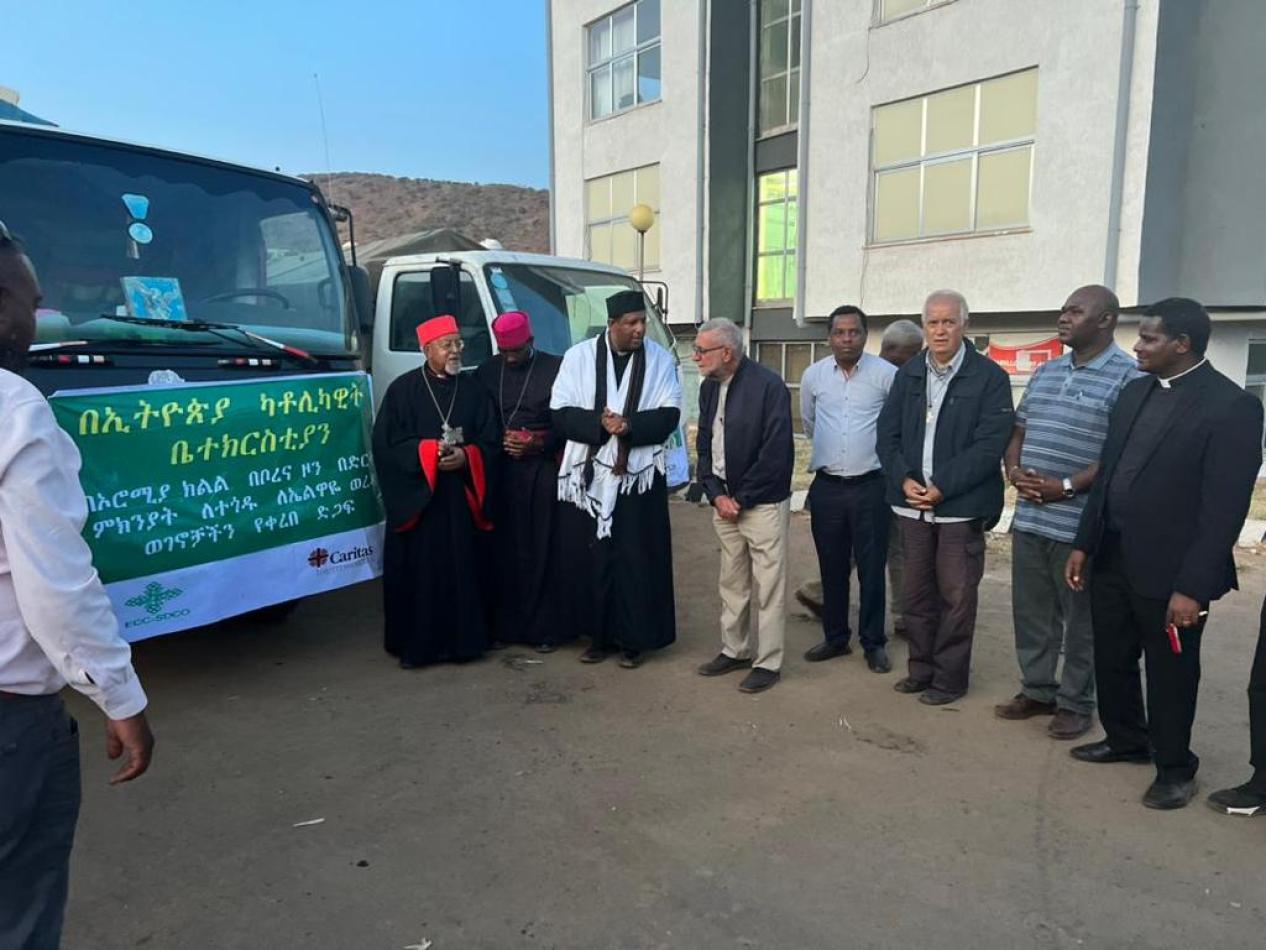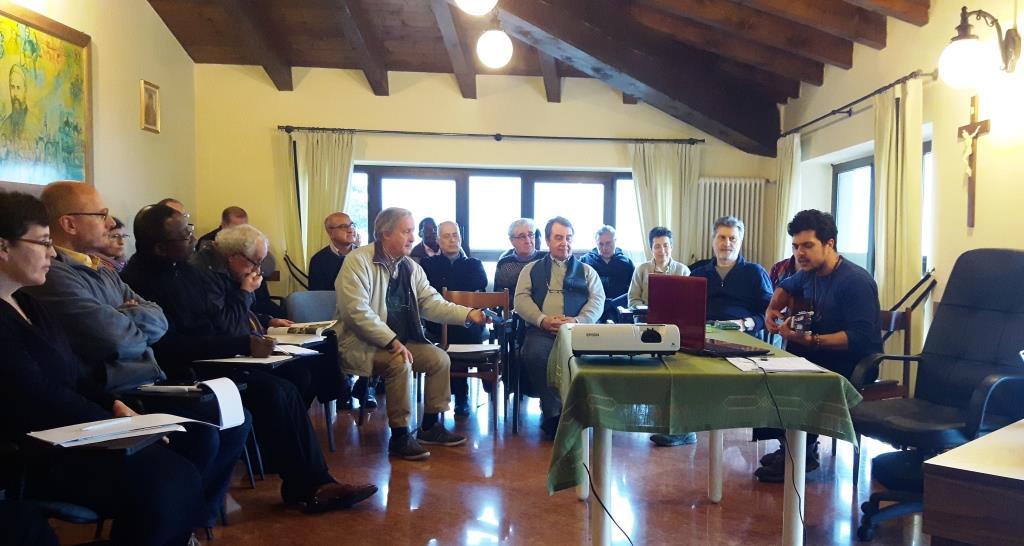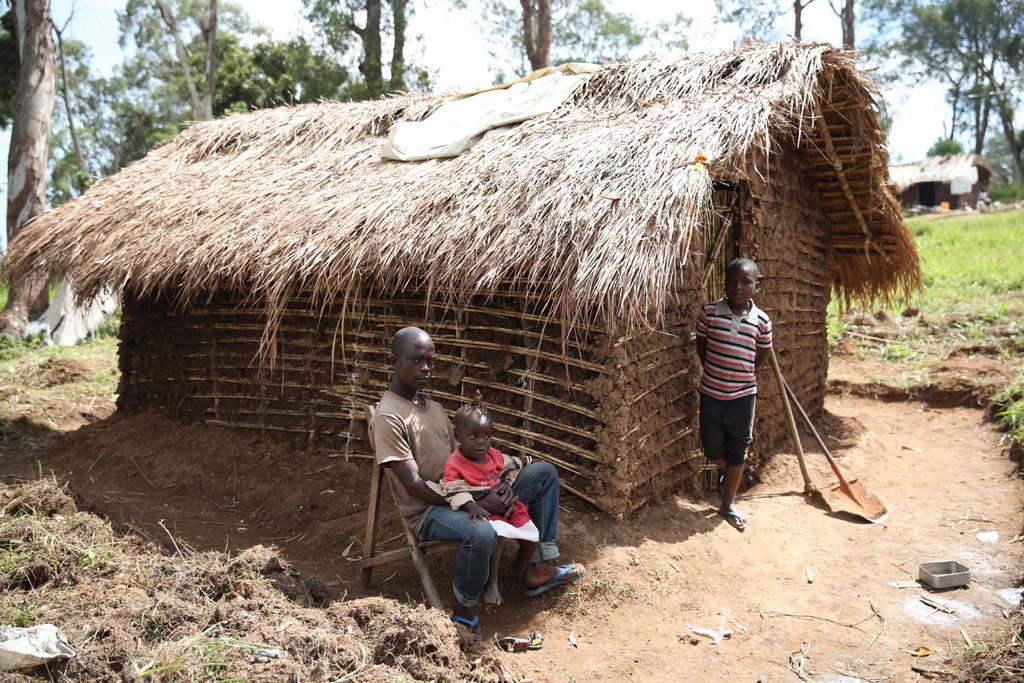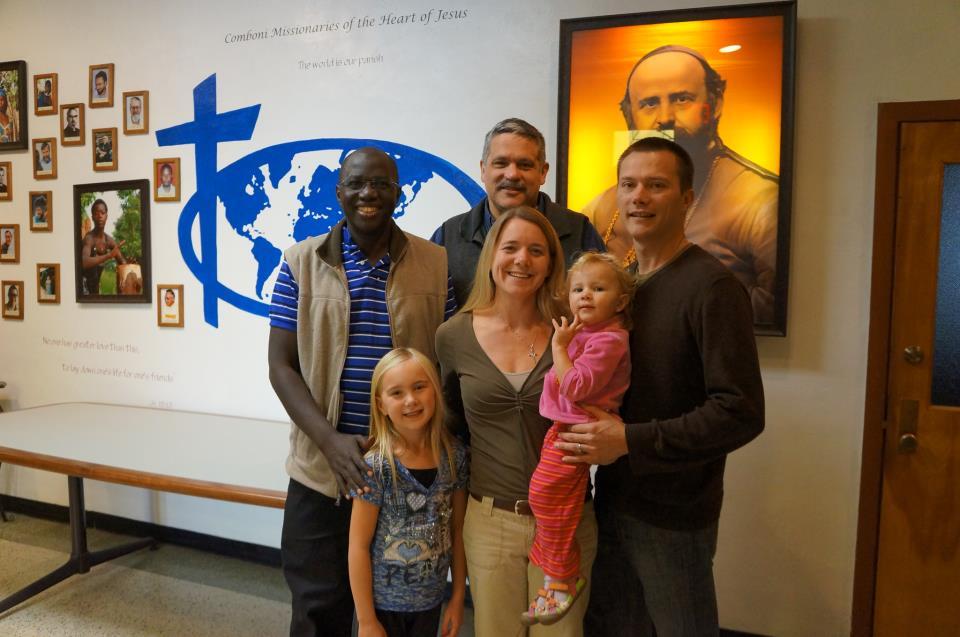Daniel Comboni
Comboni Missionaries
Institutional area
Other links
Newsletter
Monday, March 27, 2023
Between March 10 and 13, the Archbishop of Addis Ababa, Cardinal Berhaneyesus Souraphiel, and the representatives of the Vicariate of Hawassa, Fr Juan González Núñez, Apostolic Administrator, Fr Nicola Di Iorio, Delegate Vicar and Fr. Tsegaye Getahun, Director of the Catholic Secretariat of Hawassa, made a visit to Borana, in the south of the Vicariate, to one of the most affected areas by the drought, to bring some aid and, above all, hope to its victims.
It is said of the Borana that when you ask them for water, they offer you milk. It was said... until recently. Now they cannot offer neither milk nor water; they and their cattle are literally dying of thirst. The Borana occupy the southernmost part of Ethiopia, on the border with Kenya. Their land is an ever-arid steppe, but in normal rainfall it can feed an army of between two to three million cattle, plus numerous light brigades of white-coloured goats, always ready to raid on any strand of grass that comes over your crest.
However, the normal rainfall pattern in Borana has been drastically altered. It has not rained for five consecutive years and the capacity to cope with such a catastrophe has been exhausted. The water-points have dried up one after the other. Almost all the livestock has died. We are talking about at least two million heads of cattle, around twice as many as the Borana.
One has to go back 39 years to compare this dry spell with the tragically famous 1984 drought, which I also witnessed first-hand, that slaughtered an estimated one million people. The Government now wants to have the honour that no one will starve to death. It could become a reality if we consider only the IDP (Internally Displaced People) camps. But it will not be possible to know with certainty how many have died at home from malnutrition and starvation. Gradually, most of the people have been moving to the IDP camps set up by the government.
The Catholic Church delegation, headed by the Cardinal of Addis Ababa, visited Dubluk camp, which, with 80,000 residents, is one of the largest in Borana land. The internally displaced people live in tents, some proper dwellings some makeshift made of sticks and covered with plastic sheeting. The people appear clean, decently dressed and fed, with clothing and food provided by the Government and charities. But there is a sense of despondency among those who once were rich and have lost everything. This is already the longest drought in living memory: five years.
Not that the Vicariate of Hawassa was not already present, helping the IDPs in any way it could. There are three Catholic missions among the Borana people run by the Spiritan Missionaries, who have distinguished themselves in all this time by their social work, with schools, student halls of residence, water wells.
Even the Vicariate as such has come to assist the people, and we do not know when the emergency will end. Until now, it was possible to contribute to the assistance of approximately one and a half million Boranas distributing huge amounts of aid provided by organisations such as CRS (Caritas America), Caritas Austria, etc.
The day after our visit to the Borana, it began to rain. We risk that the people may start saying that the Catholics had brought rain with them. It would be a curious misunderstanding. God alone is the Lord of all that his providence has in store for us.
Juan González Núñez, mccj




